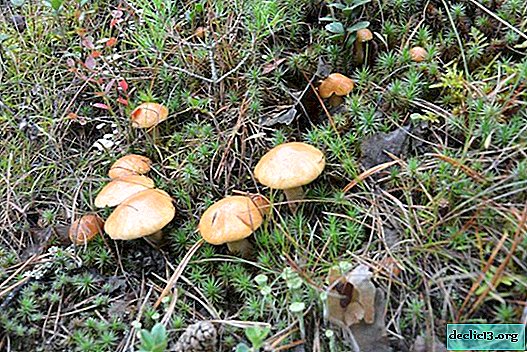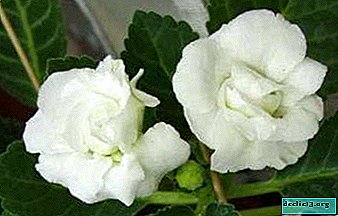Calendula - the benefits and harms, the use and folk recipes

Calendula, or marigolds, are a widely used medicinal raw material. A huge range of natural organic compounds in its flowers, allows you to use drugs based on marigolds in a variety of cases: from the treatment of gastrointestinal diseases to the treatment of burns. In the article I will consider in detail the useful properties and contraindications of calendula.
The healing properties of calendula flowers

What are the most important and useful substances for a man in marigold flowers?
- Carotenoids. Responsible for the orange color of the petals.
- Lutein, which a person receives only from plant foods or lutein-containing supplements, is especially important for the normal functioning of vision. Scientifically proven that a lack of lutein leads to early retinal depletion and clouding of the lens.
- Lycopene - Another antioxidant found in marigolds, the benefits of which are enormous. Low levels of lycopene in the blood increase the likelihood of heart disease, cataracts, and even a number of oncological diseases.
- Saponins. They have an ambiguous effect on the body: on the one hand, they can provoke allergies, on the other, they dilute sputum with cough and bronchitis. In the pharmaceutical industry, they are used in expectorant syrups and collections.
- Essential oil. The most enjoyable method of use is aromatherapy. It is also used in anti-inflammatory and antitussive drugs.
- Salicylic acid. A known component of ointments intended for the treatment of skin diseases.
Dry marigold flowers are sold packaged in briquettes, which is very convenient - you need to brew one briquette in a glass of boiling water and insist for half an hour. This infusion can rinse your mouth several times a day to treat periodontal disease, stomatitis, or with exacerbation of tonsillitis. The aroma of the infusion is pleasant in itself, unlike many medicinal fees, and rinsing will not be a burden.
Based on the extract of calendula petals, the drug Kaleflon was created, used for exacerbations of various gastrointestinal diseases: gastritis or ulcers. Kaleflon helps relieve the pain by relieving inflammation.
The healing properties of tincture of calendula
Alcohol tincture of calendula is available in 50 ml bottles and contains 70% ethanol (ordinary alcohol). It is used for infectious diseases, especially angina or bronchitis, to relieve inflammation and disinfection. Tincture has a choleretic effect in the treatment of a chronic form of cholecystitis. It is recommended to rinse your mouth with alcohol tincture of marigolds and to get rid of stomatitis.
It is good to make lotions on wounds and burns with tincture - salicylic acid helps to heal the skin and prevents inflammation. As before rinsing the throat, you first need to dilute it with water (a teaspoon per glass).
The healing properties of ointment
Calendula ointment has a pleasant smell and a brownish tint. It is indispensable for the restoration of skin tissue, since it has not only anti-inflammatory, but also a regenerating effect. In the case of purulent wounds, you must first clean and dry the injured area, then apply the ointment (in a small portion, about a pea for small injuries) and apply a bandage.
Marigold ointment is used to heal anal fissures - for this it is convenient to lubricate a tampon with medicine and inject it into the rectum twice a day.
Another disease that calendula successfully fights is varicose veins and other phlebitis. In this case, the ointment is applied in a very thick layer, do not rub and leave overnight. It is recommended to put soft paper under the bandage - for example, the one used for baking in the oven. It is advisable to do such procedures during the day, changing dressings every 8 hours. This method also helps in the treatment of ulcers - trophic or varicose.
Contraindications and harm to calendula

A frequent contraindication that interferes with the use of calendula preparations is individual intolerance or allergy to the plant. With skin or oral irritation, you will have to pay attention to other herbal medicines. However, when applying the ointment to the wound, a slight sensation of scratching or irritation should not be scared - this is a normal skin reaction to the active substances of calendula.
Calendula ointment is not intended for the treatment of mucous membranes - in case of contact with eyes or mouth, rinse immediately with water. Calendula can also cause gastrointestinal dysbiosis.
Who is not recommended to use calendula?
- Little children. Ointment can be used only for children over six years of age, since there is no reliable information about its side effects at a young age, and a child can easily swallow it or rub its eyes. For obvious reasons, alcohol tincture should not be given to children either.
- Pregnant and lactating. Even in the case of ointment, care must be taken, not to mention the use of infusions.
- Hypotonic patients and patients with bradycardia (pulse below 55), since tincture of calendula lowers blood pressure. Note for hypertensive patients - 30 drops per quarter cup of warm water, taken orally.
With regard to the combination of marigold preparations and other drugs, little is known, but with sedatives and sedatives it is undesirable to use.
In the presence of chronic diseases or taking other medicines, you should definitely check with your doctor if it is possible and how to use tincture or calendula ointment.Recipes for the preparation of infusion and decoction of calendula

On industrial preparations and medicinal raw materials, the use of marigolds does not end. Beauticians have accumulated rich experience in using calendula flowers and essential oils. Yes, and to prepare an infusion or decoction of calendula at home is not difficult.
The main difference between tincture and tincture is that the first has a water base, the tincture is always alcohol.
Tincture at home - recipe and use
If there is a calendula bought in a pharmacy or dried flowers collected at the cottage, you can use a folk recipe for making a marigold infusion:
- Dilute: 1 tablespoon + 1 cup boiling water.
- Insist: in a water bath for 10 minutes, without a bath - half an hour, in a thermos - 15-20 minutes.
- Cool, strain, store at a temperature not exceeding +4◦FROM.
- Shelf life: 48 hours.
Infusion can rinse your mouth, wash your wounds. If we talk about skin care, it is useful to make foot baths with the addition of calendula, wipe your face with cotton pads moistened in a cold infusion. To save time in the morning, pour the finished infusion into ice molds in advance and freeze it. Such icy fragrant cubes will not only refresh your complexion and tone up, but will finally wake you up after a night's sleep.
Calendula for different skin types - folk remedies
At home, just make a product based on marigolds by skin type:
- Infusion + potato starch for sensitive skin. The mask should have a jelly consistency. Application: apply on face and rinse off after 20 minutes.
- Juice of calendula petals + lemon juice in equal proportions for whitening the skin and removing freckles.
- 30 g of calendula (2 tablespoons) + 2 tablespoons of hazelnut powder in half a liter of water for oily skin. Such a lotion is infused for several hours and perfectly heals acne and pustules. Alcohol tincture will also dry problem skin.
Not only the infusion of calendula is effective in combating acne. You can make your own ointment for the treatment of acne: just mix any face cream, best nutritious, in the container with dry marigold flowers and grind them until smooth. Suitable for use in the morning and evening.
Calendula broth
The broth is prepared according to the following step-by-step recipe
- 30 or 60 g (two filters) of dried flowers pour three cups of cold water (750 ml).
- Boil for one hour over low heat.
- Take a glass several times a day.
In addition to the general strengthening effect on the body, decoction of marigolds is also good for rinsing hair. It is not necessary to get involved in this procedure, it is enough to repeat once every one and a half weeks. Calendula is especially recommended for oily hair and for drying the scalp, healing wounds and combs.
For dry hair, a mask with a tincture of simple ingredients is suitable:
- A teaspoon of calendula tincture;
- Three tablespoons of burdock oil;
- Two egg yolks.
Apply the mask 30 minutes before washing your hair: apply, leave for half an hour and then rinse your hair.
Unusual uses of calendula: folk wisdom

What else, besides medicinal infusions and decoctions, can be made from marigolds? For example, it’s easy to make calendula syrup at home.
Syrup
To do this, you will need:
- half a liter of decoction of calendula;
- a pound of honey (in case of allergy - sugar).
Heat the mixture in a pan and mix thoroughly until complete dissolution. Store chilled syrup in opaque containers and drink a teaspoon three times a day.
Essential oil
Calendula essential oil, sold in pharmacies, can also be prepared on its own.
- Place fresh marigold flowers in a transparent jar or bowl, close tightly and place in a sunny place.
- An oil concentrate will gather at the bottom, which will come in handy as a salad dressing, which has a beneficial effect on the immune system and skin care.
Washcloth
With a calendula, you can even make a washcloth - essential oil is useful. Mix two teaspoons of the oil with a glass of oatmeal (200 g) and place the mixture in a linen bag.

















